Data processing information
Configure the data processing information settings.
In the DataMagic Management screen, click the Data processing to display the Data Processing Information List screen, and then click the New button to display the Data Processing Settings screen. Configure the settings as shown below and save them.
1. Enter cnv19 in the ID field.
2. Configure the settings for the input file (C:\Examples\19\input\sampleIN19.dat).
Select an input file format in the Object palette, and then drag and drop it on the input area. Double-click the icon to display the Input Settings screen.
Configure the settings as shown below.
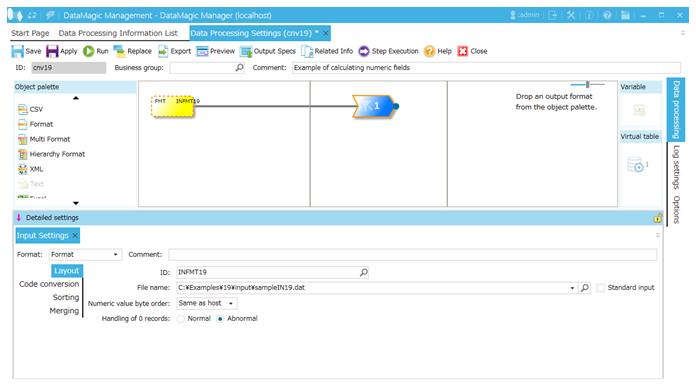
Screen 8.165 Input Settings screen
3. Set extraction condition 1 (1 ≤ koumoku1 ≤ 999).
Double-click the Extraction Condition icon to display the Extraction Condition Settings screen.
Configure the settings as shown below.
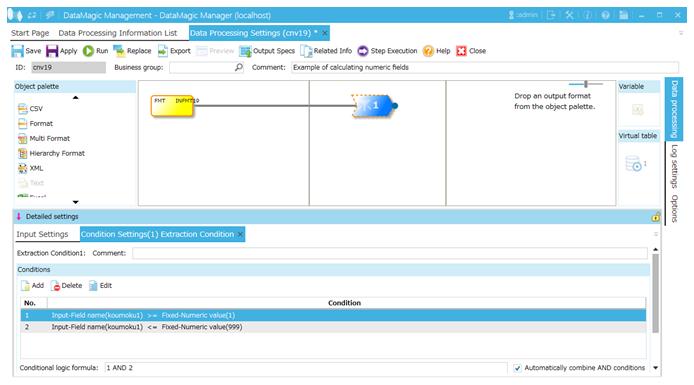
Screen 8.166 Extraction Condition Settings screen
4. Configure the settings for the output file (C:\Examples\19\output\sampleOUT19.dat).
Select an output file format in the Object palette, and then drag and drop it on the output area. Double-click the icon to display the Output Settings screen.
Configure the settings as shown below.
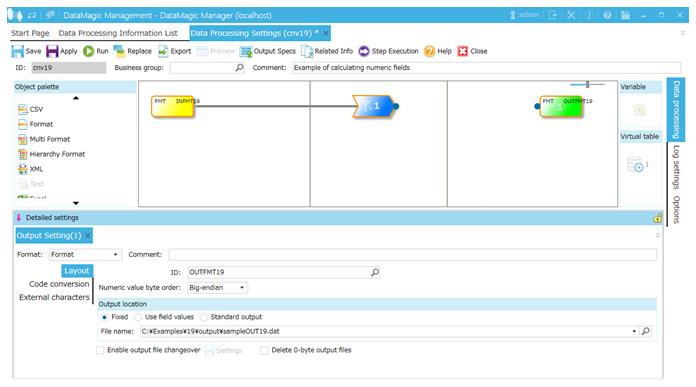
Screen 8.167 Output Settings screen
5. Link the extraction condition and output file.
Choose the Extraction Condition icon and drag and drop it onto the File icon on the right to draw a relation line.

Screen 8.168 Mapping of extraction conditions and output file
6. Specify the output format.
1) Display the Set Mapping Information screen.
Double-click the Mapping icon created on the relation line between the Extraction Condition icon and Output icon. This displays the Set Mapping Information screen.
2) Check the tree view.
The tree view of the input (left) should show the format information (ID=INFMT19) fields.
The tree view of the output (right) should show the format information (ID=OUTFMT19) fields.
3) Draw relation lines.
You can draw a relation line by dragging and dropping the field node in the left tree to the field node in the right tree. Draw relation lines as shown in the screen below.
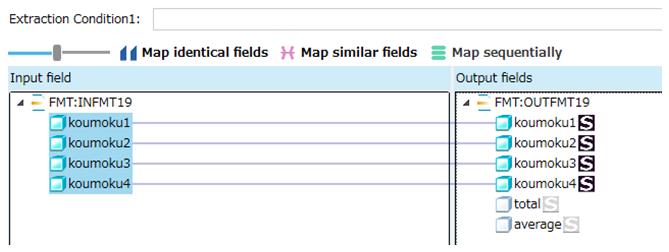
Screen 8.169 Input-Output relation lines
4) Register a numerical formula to the output field total.
Here, you will configure the settings for calculating the sum of the values of input fields koumoku3 and koumoku4 and converting the result to the output field total. Select the field total in the output-side (right) tree and click the Add row button in the Output information area. This displays the Output Information Settings screen. Select Numeric operations and enter the formula shown below in Formula. When you finish, click the OK button.
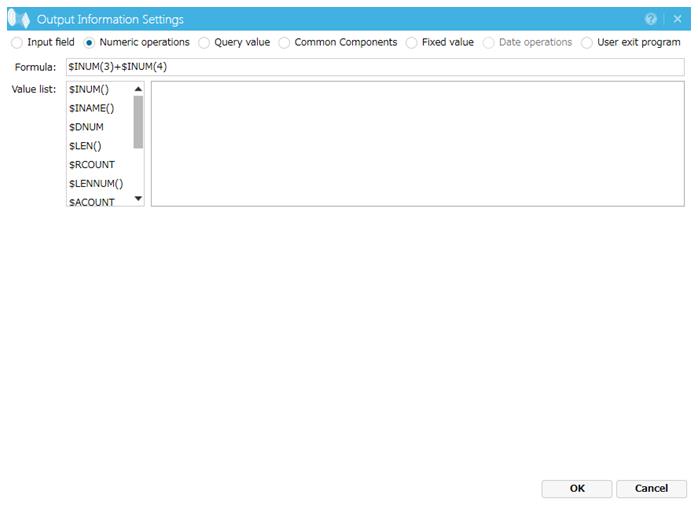
Screen 8.170 Output Information Settings screen (Numeric operations/total)
Select the field total in the output-side (right) tree on the Set Mapping Information screen. The settings appear in the Output information list.

Screen 8.171 Mapping output information
5) Register a numerical formula to the output field average.
Here, you will configure the settings for calculating the average of the values of input fields koumoku3 and koumoku4 and converting the result to the output field average.
Add output information by performing the same operation as (d). After the screen for setting the numeric operation is displayed, enter information as shown below and then click the OK button.
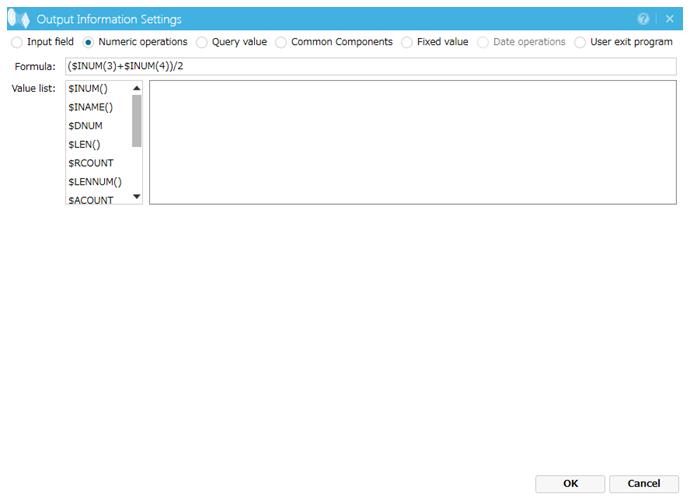
Screen 8.172 Output Information Settings screen (Numeric operations/average)
Select the field average in the output-side (right) tree on the Set Mapping Information screen. The settings appear in the Output information list.

Screen 8.173 Mapping output information
6) Register the mapping information.
Click the OK button to register the mapping information.
7. Click the Apply button to save the data processing information.